
Sushi restaurant Nanbu in Amsterdam – our review
Sushi restaurant Nanbu in Amsterdam is a place gourmets are sure to find. We took a look. Read our review here.
Home » Japanese Knives vs Western Knives: Which is best for your kitchen?

The moment I decided to get serious about working in the kitchen, I also thought it was time to get serious about my kitchen tools. The first question I asked myself then: What kind of knives do I need? Do I choose Japanese knives or Western knives? After all, a good quality knife is an essential tool for any home cook or professional chef. With so many options available in the kitchen store, I found it quite overwhelming to decide which knife to invest in. I saw the familiar Western knives, but of course I also saw the beautifully designed Japanese knives. Which one should I take? Which one is best for my kitchen? In this article I’ll go into more detail about the differences between Japanese and Western knives and help you determine which knife is best for your kitchen. And I’ll tell you why I ultimately chose to go with Japanese knives.
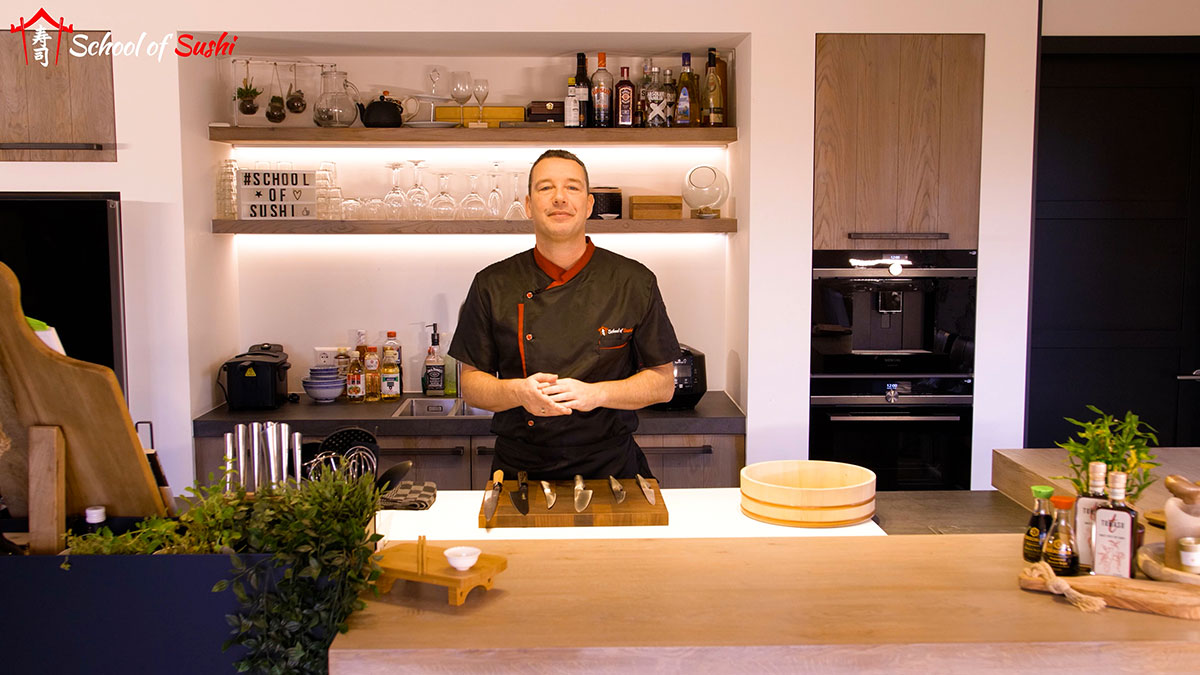
One of the main differences between Japanese knives and Western knives is the type of steel used. Japanese knives are usually made of high-carbon steel, which is harder and more brittle than the stainless steel used in Western knives. This means that Japanese knives are sharper and can retain their sharpness longer, making them ideal for slicing and chopping. Western knives, on the other hand, are more durable and can handle tougher tasks, such as cutting through bones and tougher vegetables. Because of the insanely sharpness of Japanese knives, I finally decided to go for that option. The sharper my knife, the nicer my slices of salmon and tuna are cut. And that’s what sushi is all about: Beautiful presentation of delicious fresh food!
Attention all food enthusiasts and sushi lovers! Get your aprons ready!
Roll, slice and feast like a pro! Discover how easy it is to make perfect sushi with my free delicious recipes.
Attention all food enthusiasts and sushi lovers! Get your aprons ready!
Roll, slice and feast like a pro! Discover how easy it is to make perfect sushi with my free delicious recipes.
Imagine mastering the art of crafting exquisite rolls, nigiri, and sashimi from the comfort of your own kitchen. Don’t miss out! Click below to secure your free recipes and unlock a world of flavor and creativity.
Japanese knives and Western knives also differ in their construction. In Europe, knives are traditionally always made from 1 piece of steel, which is called mono-steel. In the West, people tend to prefer affordable knives that don’t damage too easily. That’s why in Europe they use soft rust-resistant steel.
In Japan, they have much higher demands on the hardness, sharpness and sharpness of the knives. So they usually choose a San Mai construction (literally: 3 layers) with a very hard core layer and around it a soft steel protective layer. So on the one hand this saves costs because you need much less of the very expensive hard core steel and at the same time you protect the extremely hard core layer with the soft outer layer.
This is a technique that actually comes from the art of samurai swordsmithing. When carrying samurai swords was banned around 1870, a lot of swordsmiths switched to forging kitchen knives. Therefore, fortunately the craftsmanship of the blacksmiths remained intact, which is why we can still enjoy perfect knives in the kitchen today.
To be honest, it took me a lot of getting used to at first when I switched to using Japanese knives, as I was used to Western chef’s knives for many years. But now I don’t know any better and enjoy the quality that a Japanese knife offers me. My slices of sashimi are now so much nicer and tighter than ever before.
For making sushi, many sushi chefs prefer Japanese knives. Not only in Japan itself, but worldwide you will see Japanese knives used in almost every sushi kitchen. The reason for this is that Japanese knives are often lighter and sharper, allowing ingredients to be cut more accurately and presented better. Japanese knives are also designed to cut through delicate fish and other ingredients without damaging them, which is important when making high-quality sushi. And if true Japanese sushi chefs swear by using these knives, who am I to be stubborn and still go with Western knives! I trust their centuries-old experience which has been passed down from generation to generation.
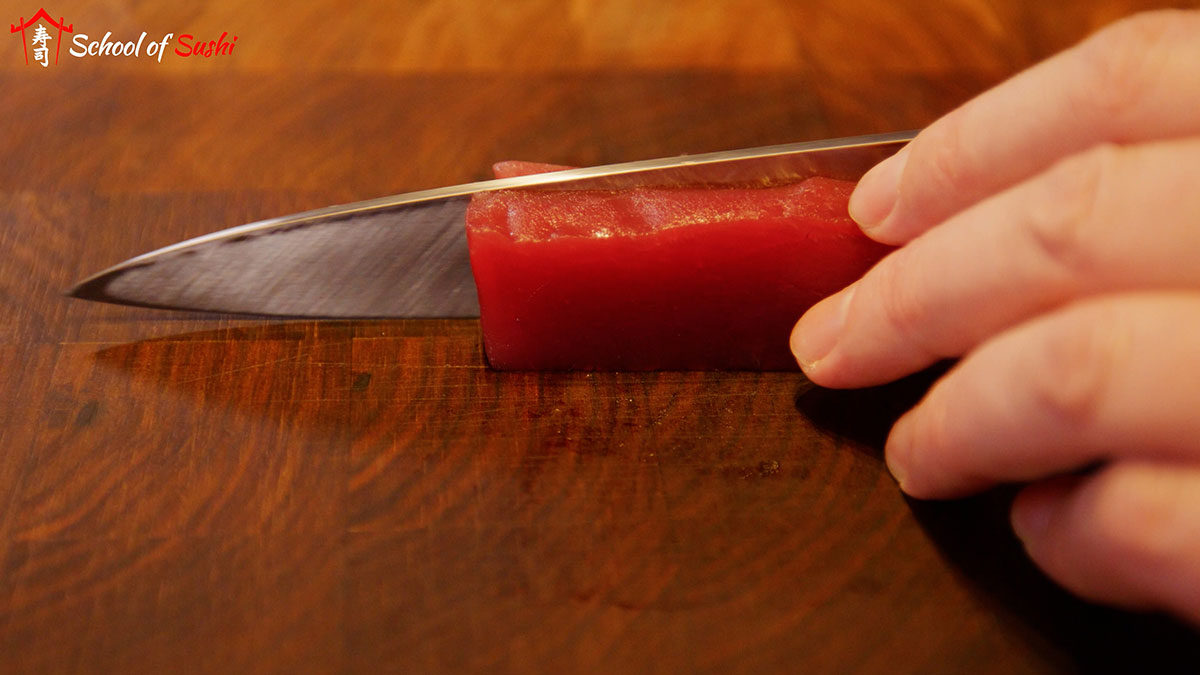
For home cooks who make their own sushi, basically any type of knife can work well. The first few times I made sushi, I also had nothing but Western knives that I used. However, it is important to consider your own level of experience and the tasks you will be using the knife for. If you are a beginner or only make sushi occasionally, a Western knife may be a better choice because of its durability and forgiveness. You can use it to prepare all ingredients well cut. However, if you are a more experienced cook who wants to take his sushi menu to the next level, then a Japanese knife might be the right choice. From my own experience, I can tell you that once you start using Japanese knives you won’t want anything else. I made the choice to give myself a “learning period” to master cutting with these knives, because this is just a little different in some cases. And, practice makes perfect!
For chefs and cooks who want to spend a lot of time in the kitchen at home, investing in high-quality knives is a must. It makes cooking so much more fun and easier when you use good knives. Japanese knives are generally more expensive than Western knives, but the extra cost can be worth it for their precision and sharpness. If you are willing to put in the time and effort to properly maintain your knife, a Japanese knife can be a great investment for any enthusiast in the kitchen.
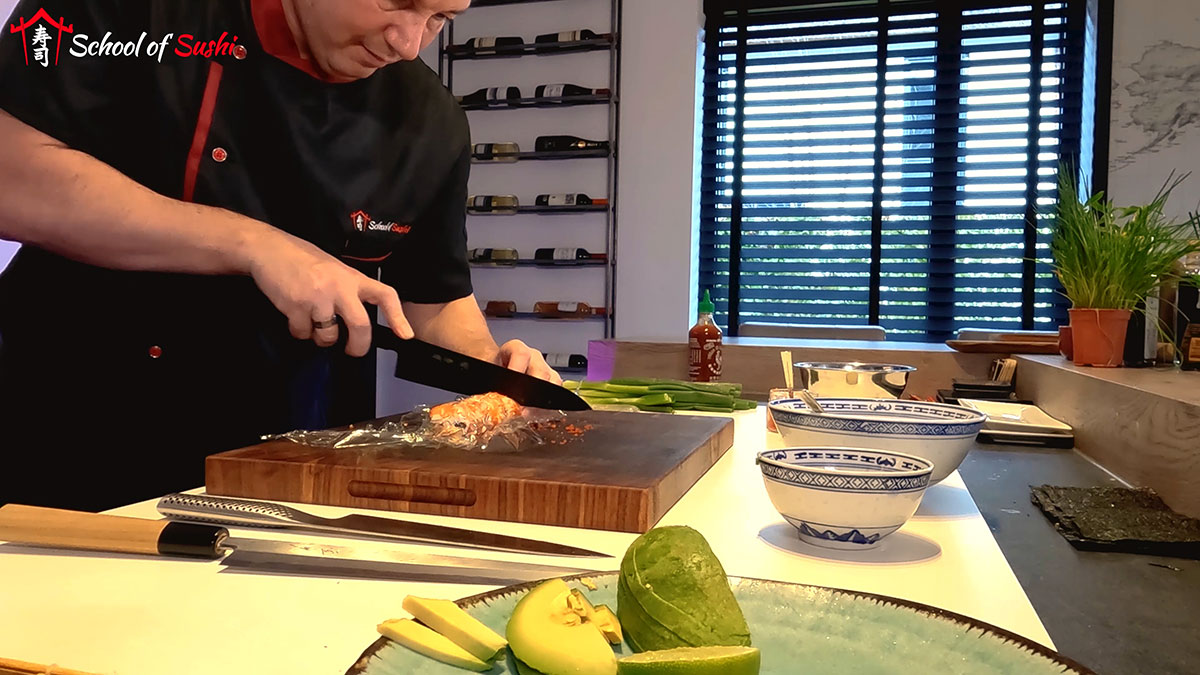
When choosing a knife, it is also important to consider the design of the handle and grip. Japanese knives usually have a traditional handle made of a special type of wood called Honoki (a type of softwood) that keeps the handle from becoming slippery when wet. The handle may perhaps be a little less ergonomic than the synthetic or rubber handles of Western knives. However, some cooks prefer the feel of a traditional Japanese handle and find it more comfortable for their grip. Try it out and feel what you like best.
Another important factor in your choice is price and your budget. Japanese knives tend to be more expensive than Western knives because of the high quality steel and construction. However, a good quality knife is an investment that will last a lifetime, so it is wise to choose the one that best suits your own needs and cooking style. But if you ask me, it’s well worth every penny. Even with the cheaper series of Japanese knives, you can get great results in your kitchen!
Ultimately, the choice between a Japanese knife and a Western knife comes down to personal preference and intended use. If you are looking for a sharp, precise knife for delicate cutting tasks, a Japanese knife may be the right choice. However, if you need a more durable knife for heavier tasks or are looking for a more forgiving option, a Western knife may be a better choice. It is wise to consider your own experience level, cooking style and budget when making the decision. What you enjoy working with is most important when choosing a Japanese or Western knife. Want to learn more about Japanese knives and their use? Then I can recommend a visit to Christian Jagersma, the owner of https://www.japaneseknives.eu/. He is one of the largest importers of Japanese knives in Europe. Christian can tell everything about it with passion and he has advised me very well in the purchase of a Japanese knife set.
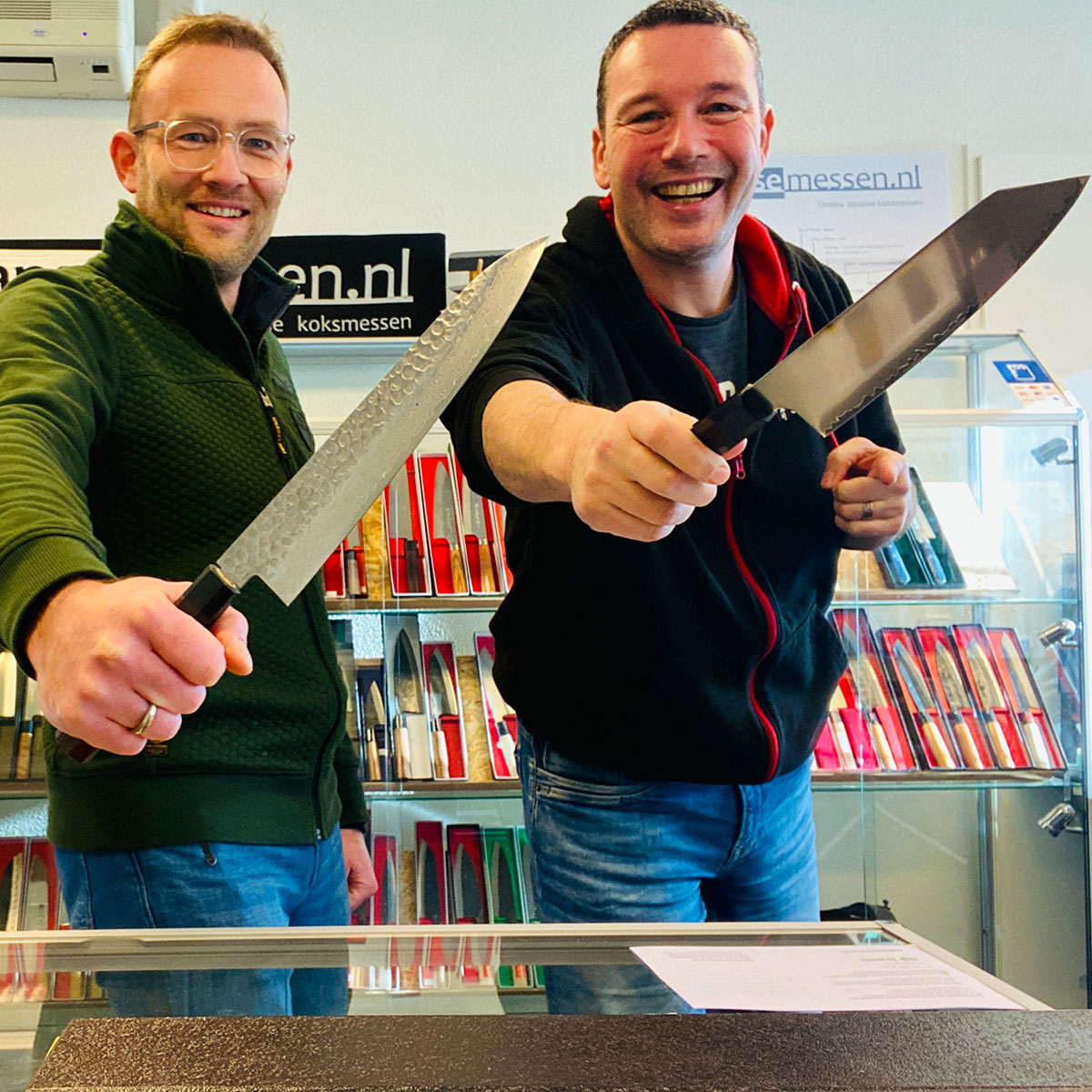
Japanese knives and Western knives both have their strengths and weaknesses, and the choice between the two ultimately comes down to personal preference. Consider your intended use and style of cooking when deciding which knives to invest in. For preparing sushi, there is only one right choice as far as I am concerned, and that is a Japanese knife. But whether you choose a Japanese knife or a Western knife, investing in a high-quality knife is a must for anyone who wants to improve their cooking.
Do you love sushi as much as I do? Have you ever tried making your own sushi at home?
If not, you’re missing out on a truly fun and rewarding experience! So why not give it a try? Take some sushi rice, and your favorite ingredients, and get rolling!
You’ll be amazed at how fun and easy it is to make sushi at home. Grab my free sushi recipes and get started right away!

Sushi chef and founder of the School of Sushi. Making your own sushi is easier and more fun than you think! Through workshops and online courses, I’ll show you how to roll delicious sushi for your friends & family. Ready to roll?
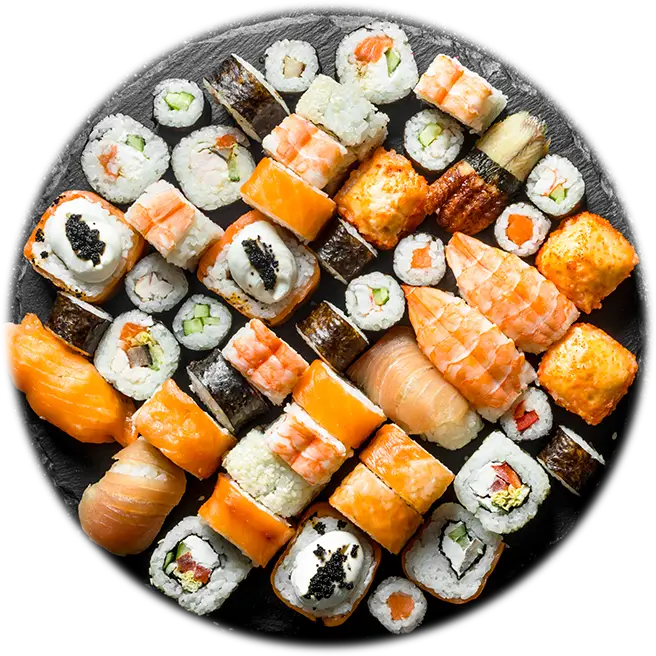
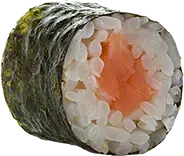

Sushi restaurant Nanbu in Amsterdam is a place gourmets are sure to find. We took a look. Read our review here.

What exactly is in sushi? The answer to this frequently asked question of what goes into this world-famous Japanese dish can be found here!
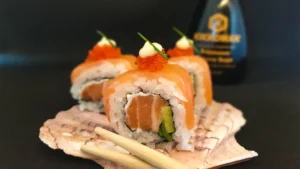
Sushi more popular than ever! Restaurants are popping up like mushrooms, and people also like to make it themselves. Why? Read on!

Discover the ultimate guide to sushi storage – learn how long you can store sushi in the fridge, and enjoy your favorite rolls longer! 🍣🍱

So make your own delicious California Roll at home with these step-by-step instructions and easy-to-follow video.

My honest answer to the most frequently asked for question right now: Is making sushi by yourself difficult? No. Now let me tell you why.
Try it out for free
Making your own Sushi at home? It’s not difficult at all.
Download my free guide with delicious sushi recipes now and from now on you can conjure up the most delicious maki, nigiri and gunkan sushi yourself.
From beginner to advanced sushi chef, my recipes are a treat for everyone!
Where do I need to send it?
Phone: +31 (0)6 12 91 44 99
E-mail: rik@schoolofsushi.com
Web: https://schoolofsushi.com
Chamber of Commerce 28109089
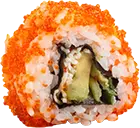



Master the art of sushi-making at home with my fun online course, featuring 50+ step-by-step videos, expert tips, and delicious recipes to impress your loved ones!